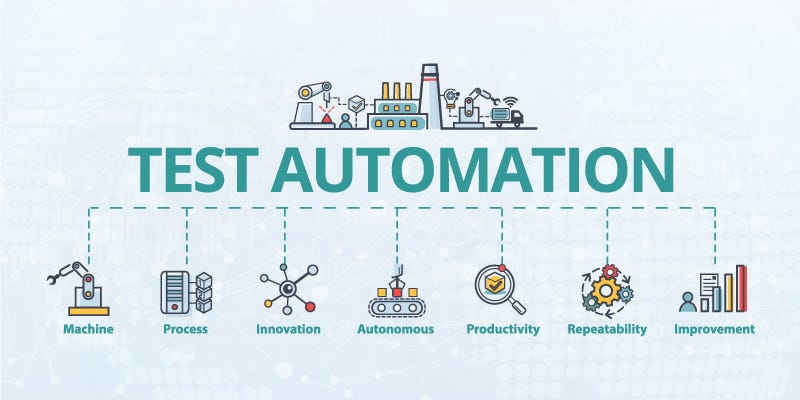Guaranteeing Success in Automation Checking: Secret Metrics, Difficulties, and Solutions Every QA Group Need To Know
In the world of software application quality guarantee, the landscape of automation testing is ever-evolving, requiring a thorough technique to guarantee smooth operations. The journey to understanding automation testing is led with subtleties that need a keen eye for monitoring, evaluation, and continual renovation. As the industry drives forward, the quest for optimum efficiency in automation screening continues to be a constant quest, advising QA groups to outfit themselves with the knowledge and strategies important for accomplishment.
Relevance of Trick Metrics
Comprehending the importance of essential metrics is vital for reviewing the efficiency and effectiveness of automation testing procedures. Key metrics work as measurable procedures that offer useful insights right into different elements of the testing process, such as examination coverage, test implementation time, defect thickness, and examination instance performance. By analyzing these metrics, QA teams can identify bottlenecks, inadequacies, and areas for improvement within their automation testing structure.
One vital element of essential metrics is their capability to track development and monitor the total health of the screening process (automation testing). They make it possible for stakeholders to make educated choices based on data-driven understandings, which can result in a lot more effective testing techniques and much better resource allotment. Furthermore, key metrics can help teams set sensible objectives, measure the success of automation initiatives, and show the ROI of automation testing efforts

Common Challenges Faced
Difficulties typically experienced in automation screening processes can substantially affect the total effectiveness and performance of QA teams. Among the major challenges is the selection of the ideal test cases for automation. Not all examination cases are suitable for automation, and picking the wrong ones can bring about lost time and resources. Furthermore, preserving test manuscripts can be a difficult job, specifically as the application undergoes regular modifications. Test manuscript upkeep needs constant updates and adjustments to ensure they mirror the existing performance accurately. One more typical obstacle is the preliminary financial investment needed for setting up automation structures and tools. This can be a barrier for some organizations, especially smaller ones with minimal budgets. Automation screening may not cover all facets of testing, such as functionality and individual experience testing, which still require hand-operated intervention. Getting over these obstacles calls for proper planning, tactical examination instance choice, robust maintenance procedures, appropriate sources, and a clear understanding of the constraints of automation screening.
Effective Solutions for Obstacles
To attend to the barriers encountered in automation testing, executing reliable remedies is crucial for improving the effectiveness and performance of QA groups. One vital option is to spend in durable training programs for QA teams to guarantee they have the needed skills to properly utilize automation tools. Training can connect expertise gaps, enhance understanding of automation frameworks, and boost scripting abilities, ultimately causing a lot more reliable test production and execution.
An additional vital remedy is to establish clear communication channels within the QA team and with other stakeholders, such as designers and project managers. Effective communication helps in aligning assumptions, sharing progress updates, and promptly resolving concerns or obstacles that may develop throughout the automation screening procedure.

Surveillance and Analysis Methods
Carrying out effective surveillance and evaluation strategies is essential for making sure the success and performance of automation screening procedures. In addition, evaluating test results and metrics offers important understandings right into the quality of the software being tested and the performance of the testing technique.
One trick technique in surveillance and analysis is making use of dashboards that consolidate pertinent metrics and KPIs in an aesthetically available style. These dashboards provide a thorough review of examination implementation condition, examination insurance description coverage, issue trends, and other essential details. Regularly assessing and examining these control panels can assist QA teams make notified choices, prioritize jobs, and enhance screening efforts.
Moreover, executing automated informs and notices based upon predefined limits can enhance proactive monitoring and prompt treatment. click for source By establishing informs for performance deviations or examination failings, groups can attend to concerns promptly and avoid them from rising. On the whole, monitoring and analysis methods play a vital function in ensuring the performance and success of automation screening efforts.
Continual Enhancement Approaches
Enhancing the efficiency of automation testing processes necessitates the constant improvement of approaches and strategies. Continual enhancement approaches are pivotal for QA groups to adjust to advancing innovations and provide premium software. One key technique to improving automation screening procedures is to conduct normal reviews and retrospectives. By examining previous testing cycles, teams Get More Information can recognize bottlenecks, inefficiencies, and areas for improvement. Carrying out comments loopholes and including lessons learned right into future testing structures can generate significant improvements with time.

Final Thought
In final thought, it is vital for QA teams to understand the crucial metrics, difficulties, and solutions in automation screening to guarantee success. By very carefully keeping an eye on and evaluating data, implementing effective solutions to usual difficulties, and continuously improving strategies, QA groups can enhance their testing procedures and deliver top quality software. Following these practices will ultimately bring about extra efficient and effective automation testing techniques.
By analyzing these metrics, QA teams can recognize bottlenecks, inadequacies, and areas for enhancement within their automation screening structure.
Additionally, essential metrics can aid groups set practical goals, gauge the success of automation campaigns, and show the ROI of automation testing efforts.
Obstacles typically come across in automation screening processes can considerably impact the general effectiveness and performance of QA teams. Automation testing may not cover all elements of testing, such as functionality and individual experience screening, which still call for hand-operated treatment.In conclusion, it is important for QA groups to recognize the vital metrics, obstacles, and remedies in automation screening to make certain success.